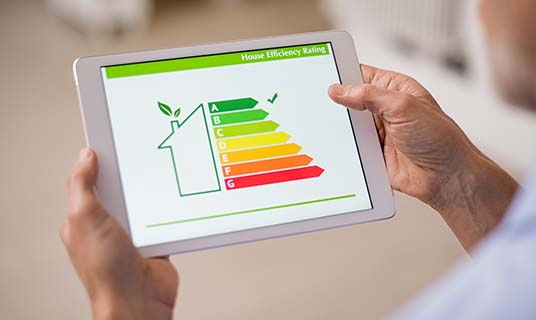Start your retrofit journey here
Last month our partners at the Northern Housing Consortium (NHC) released the findings of their Northern Housing Monitor, which made for pretty sobering reading.
Four million of the North’s homes need to be upgraded to reach an Energy Performance Certificate (EPC) level C. That’s a huge target in itself, but when you factor in the Government's Clean Growth Strategy deadline of 2035 for this to happen, that means 270,000 homes need to be retrofitted every year until then.
At the current pace of delivery, that’s not just daunting. It’s impossible. And bizarrely, some new build projects are compounding the problem – one in 17 new houses being built are below EPC C.
But in a sabre-rattling article for Inside Housing, NHC chief executive Tracy Harrison likened the challenge to that of the Covid mass vaccination programme. Collaboration towards our goals is vital, and the requisite funding is needed.
Something that’s been evident to me since the launch of CPC is how committed to this challenge housing teams are, and we’ve written before about how social housing can lead the charge on greener homes, with the right support.
Retrofit in practice
NHC is calling on Rishi Sunak to bring forward the £3.8billion pledged for the Social Housing Decarbonisation Fund and to confirm the £2.5billion Home Upgrade Grant. But even without the very high levels of funding needed, local authorities and housing associations are still doing what they can to forge ahead.
Earlier this month I spoke at the Chartered Institute of Housing’s annual conference, looking at how housing providers in the North can get ready to meet their net zero challenges, and how this is already happening in some places.
It’s clear that we all know what we need to do. The question is, how? How do housing providers meet these targets, both in terms of finding enough contractors with the right skills and experience to carry out this critical work, and with the clock ticking, how do you get started quickly and where should you best spend your limited budgets?
We recommend that you start with an audit of your housing stock and work out where improvements can be made quickly. Do you want to focus your initial efforts on the worst housing stock where people are most vulnerable? Or should your focus initially be on those properties where you can make an impact fastest? You’ll need good data to help you decide on the best strategy.
Work with trusted and proven suppliers. To save time, use a framework such as our Energy Efficiency Consultancy Services (N8C) framework, which covers local suppliers who are able to provide energy surveys and recommendations. Together with the Energy Efficiency Measures and Associated Works (N8) framework, which includes specialist installers in insulation and heating, this approach will mean you have access to local companies who are proven to have the necessary knowledge and expertise.
One example of a successful project is North West Leicestershire District Council, which as part of the Government’s Green Homes Grant Local Authority Delivery scheme implemented a programme of energy efficiency improvement works for 56 homes across the area, with a further 25 to be surveyed.
Called the Green Homes Improvement Programme, the project – which received around £700,000 in grant funding – needed to be delivered between April and September 2021. The homes in question were predominantly electric or solid-fuel heated, with a small number on mains gas, and the programme involved the fitting of a range of measures including air source heat pumps, external wall insulation, cavity wall insulation, solar PV, energy efficient lighting, and loft insulation.
Through CPC’s frameworks, the council appointed Rybka, a building services engineering consultancy, to survey the properties and to provide energy efficiency improvement recommendations, and Aaron Services, a specialist multi-fuel heating and insulation contractor working across the Midlands and the East of England, to install the recommended measures.
As a result, by the end of the project all properties will have been increased to an Energy Performance Certificate of C or better.
Retrofit and levelling up
We’re still in the dark as to what ‘levelling up’ really means. There’s a White Paper due this autumn, but my hope is that the Government sees a large-scale retrofit programme for what it is – a huge opportunity to level up swathes of the country.
For example, it’s a shocking statistic to consider that more than 13% of all households in England are in fuel poverty. Under the Low Income Low Energy (LILEE) indicator, a household is classed as fuel poor if:
- They live in a property with an energy efficiency rating of band D or below
and
- When their home is adequately heated, their residual income is below the poverty line.
Fuel poverty is influenced by household income, housing energy efficiency and fuel prices. The need to improve the energy efficiency of our housing stock is a key element in reducing fuel poverty among residents – and the one element that housing providers can directly influence.
By developing the retrofit supply chain and supporting local companies and SMEs, we’ll also be investing in thousands of new jobs – the NHC report estimates that around 77,000 new green jobs could be created in the North by the 2030s if we strive to meet the EPC goals.
We’re absolutely of the view that social housing can and will play a central role in this, and has already started the process in some places.
By taking a systematic, phased approach while also benefiting from the Government grants that are already on offer, this seemingly momentous task to retrofit all our housing stock can be achieved if we start laying the groundwork now.
Gary Cawley, CPC Director


